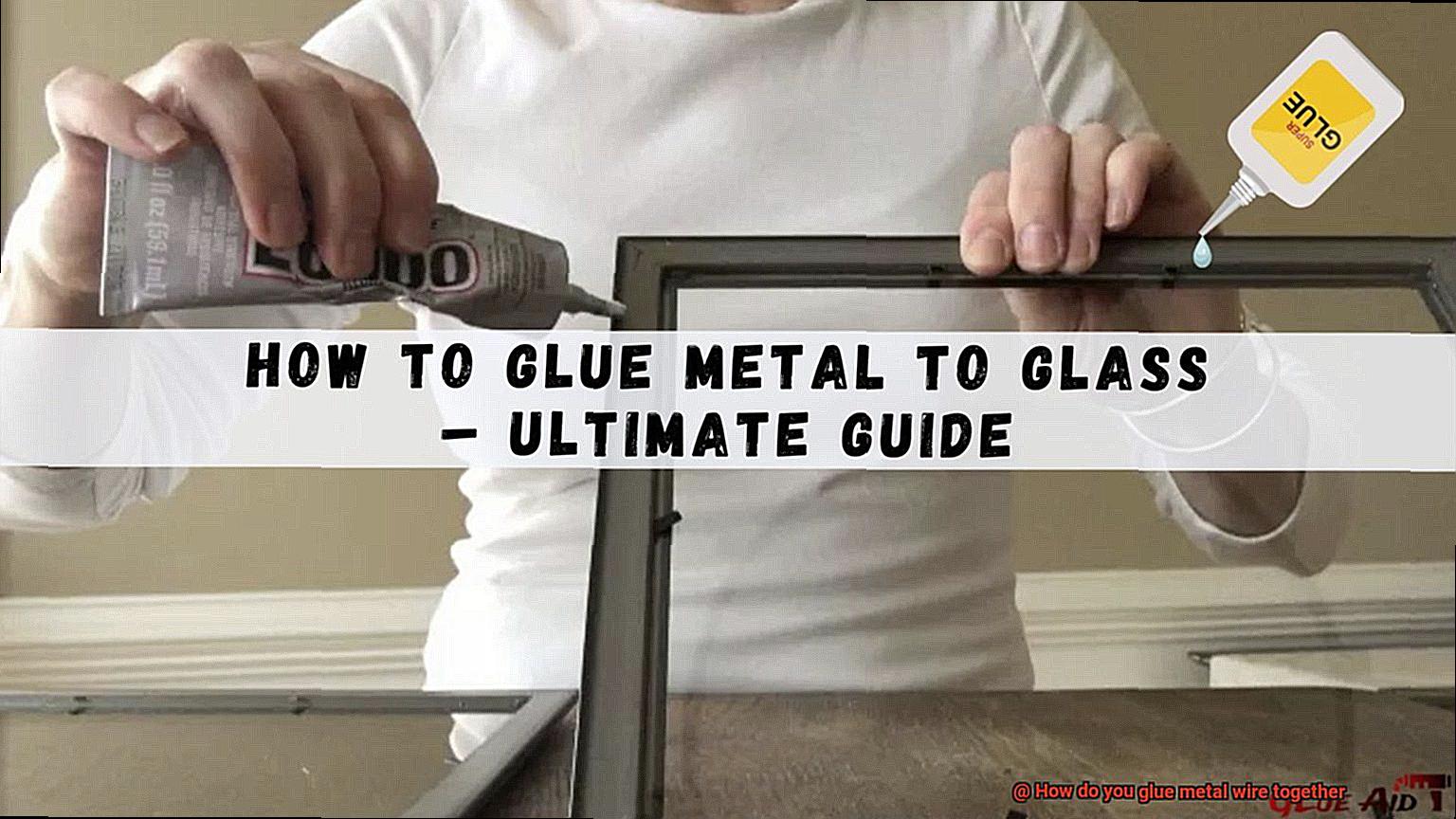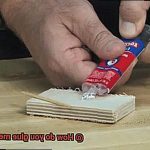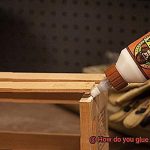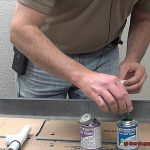Are you feeling stuck trying to glue metal wires together for a project? Maybe you’re repairing something or working on a DIY masterpiece, but you can’t seem to find the right adhesive to do the job. Well, fear not. We’ve got your back and are here to help.
In this article, we’ll dive into the nitty-gritty of how to glue metal wire together. But before we get started, did you know that ancient civilizations like the Egyptians and Greeks used metal wire bonding for everything from jewelry to weapons? It’s a technique that has been around for centuries and has only gotten better with time.
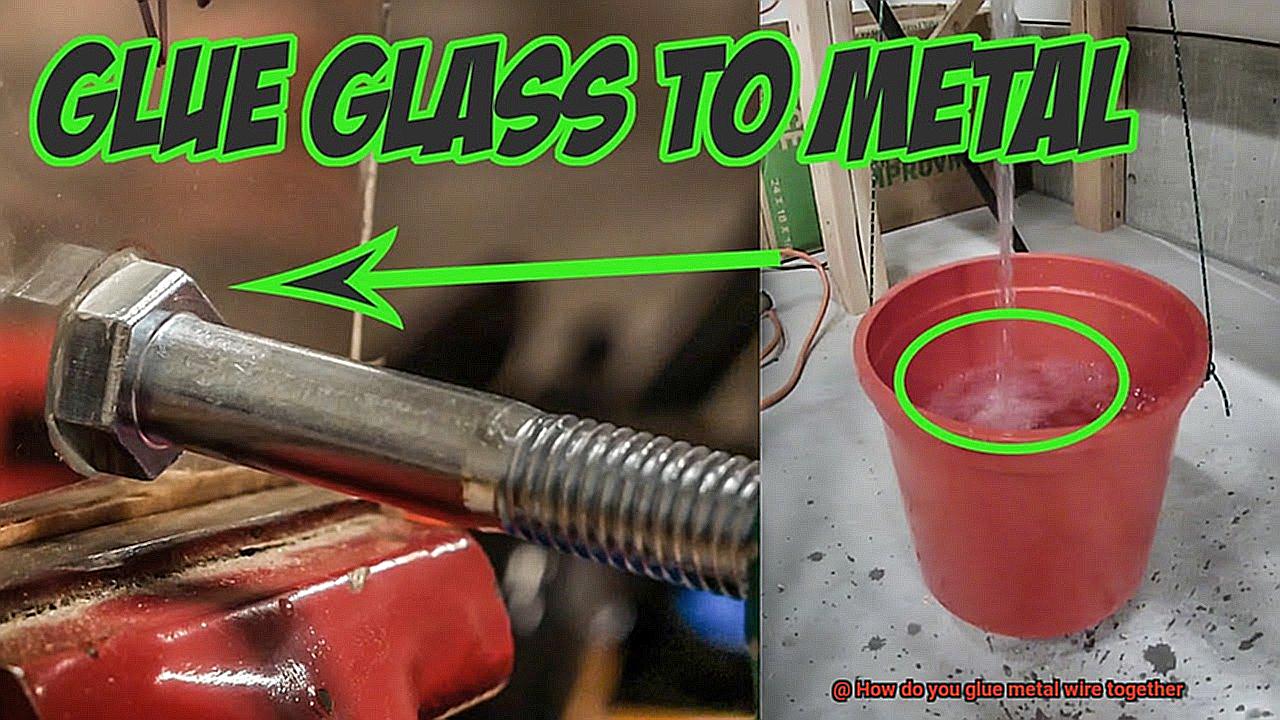
Nowadays, there are various types of adhesives suitable for metal wire bonding that provide excellent strength and durability. We’ll take a look at some of these adhesives, including epoxy, cyanoacrylate, and polyurethane adhesive. Plus, we’ll share tips on how to prepare the surface of your metal wires for bonding by cleaning and roughing them up just enough.
Whether you’re fixing something around the house or creating a masterpiece in your workshop, learning how to glue metal wires together is an essential skill. So let’s jump in and explore the best techniques for getting it done.
Types of Glue for Metal Wire
Contents
- 1 Types of Glue for Metal Wire
- 2 Soldering for Gluing Metal Wire
- 3 Using Epoxy Glue to Join Metal Wires
- 4 Utilizing Cyanoacrylate (Super Glue) for Bonding
- 5 Hot Glue as an Option for Gluing Metal Wire Together
- 6 Advantages and Disadvantages of Different Glues
- 7 Safety Precautions When Working with Adhesives
- 8 Tips and Tricks for Best Results when Gluing Metal Wires Together
- 9 Conclusion
Bonding metal wire together can be challenging, especially if you don’t know what type of glue to use. There are various adhesive options available, each with its own advantages and disadvantages. Here’s a breakdown of the different types of glue that can be used for bonding metal wire together.
Cyanoacrylate Glue (Super Glue)
Cyanoacrylate glue is a fast-drying adhesive that creates a strong bond between metal wires. It’s ideal for small or delicate wires, but may not be the best option for larger or heavier wires. Super glue can become brittle over time, so it’s not recommended for wires that will be exposed to high levels of stress or movement.
Epoxy Glue
Epoxy glue is a two-part adhesive that forms a very strong bond when mixed together. It can withstand high levels of stress and movement, making it suitable for use with heavy-duty wires. However, it takes longer to dry and requires careful mixing of the two parts.
Silicone Adhesive
For wires that will be exposed to outdoor elements or extreme temperatures, silicone adhesive may be the best option. This type of glue is weather-resistant and can withstand temperature changes without breaking down. However, it may not provide as strong of a bond as other types of adhesives.
Metal Bonding Adhesives
Specialty adhesives designed specifically for bonding metal wires together are often the best choice. These adhesives contain metal particles and are formulated to create a strong bond between metal surfaces. They may be more expensive than other options but can provide excellent results in specific applications.
Conductive Adhesives
Conductive adhesives are designed to maintain electrical conductivity while bonding wires together. They’re great for projects that require an electrically conductive bond and can be used with a variety of metals.
When selecting a glue for metal wire, it’s essential to consider factors such as strength, durability, and exposure to elements or stress. Each type of adhesive has its own advantages and disadvantages, so it’s important to choose the right one for your specific application.
Soldering for Gluing Metal Wire
Look no further than soldering. This popular technique involves melting a metal alloy onto the joint area, creating a bond that is both strong and durable. Let’s take a closer look at the process of soldering metal wires together.
Before you begin, you will need a few tools and materials, including a soldering iron, solder wire, flux, and pliers. Once you have everything you need, it’s time to get started. The first step is to clean the wires thoroughly to remove any dirt or oxidation that may prevent the solder from bonding properly. Next, apply flux to the joint area to help the solder flow evenly and prevent oxidation during the heating process.
Now comes the exciting part – heating up the soldering iron. Once it’s hot enough, gently touch it to the joint area until it reaches the melting point of the solder wire. Apply the solder wire to the heated joint area, allowing it to melt and flow around the wires. Use pliers to hold everything in place until the solder cools and solidifies.
It’s important not to overheat the wires as this can cause damage or weaken the joint. Additionally, make sure to take appropriate safety measures when handling hot tools and materials.
Soldering is an excellent choice for applications where strength is crucial, such as electrical wiring or jewelry making. With practice and skill, anyone can master this technique and create beautiful and functional pieces.
Using Epoxy Glue to Join Metal Wires
Joining metal wires can be a challenging task, especially if you’re not keen on soldering. Luckily, epoxy glue offers a great alternative that can create a strong and durable bond between metal wires.
Firstly, preparation is key. Ensure that the wires are clean and free from any contaminants that could interfere with the bonding process by using a degreaser or rubbing alcohol. Once your wires are clean and dry, it’s time to apply the epoxy glue.
Epoxy glue comes in two parts: resin and hardener. By mixing them together, you create a potent adhesive that can withstand high temperatures and harsh environments. Apply the glue to one of the wires using a small brush or applicator, making sure you use enough glue to create a strong bond without causing drips or runs.
Next, carefully place the second wire onto the glued surface and hold it in place for several minutes. Depending on the type of epoxy you’re using, you may need to use clamps or tape to keep the wires in place while the glue cures. It’s essential to read the manufacturer’s instructions carefully as different types of epoxy have varying curing times and working temperatures.
It’s worth noting that certain types of epoxy may not be suitable for specific types of metal or wire coatings. Test the glue on a small area first before applying it to a larger surface.
Utilizing Cyanoacrylate (Super Glue) for Bonding
Cyanoacrylate, also known as super glue, is a popular adhesive choice for bonding metal wire together. This fast-drying and strong adhesive is ideal for those quick and secure bonding projects that we all love.
But before you dive in, it’s important to note that proper cleaning and application techniques are crucial for optimal adhesion. First, thoroughly clean the surface with a clean cloth or alcohol-based cleaner to remove any dirt or debris that could interfere with your bond. To create a better bonding surface, roughen up the wire with sandpaper or a file.
When applying the glue, remember that less is more. A little bit of cyanoacrylate goes a long way. Applying too much can cause the glue to overflow and create a messy bond. Apply a small amount of glue directly to one of the wires, then press the two wires together firmly for several seconds. The bond should be secure and ready for action.
However, it’s important to note that cyanoacrylate may not be suitable for all types of metal wire. Certain metals such as aluminum or stainless steel may require a different type of adhesive specifically designed for those materials. It’s always best to check the manufacturer’s recommendations before starting your project.
Hot Glue as an Option for Gluing Metal Wire Together
Hot glue is a popular option for bonding materials together, and metal wire is no exception. It’s a thermoplastic adhesive that’s melted in a hot glue gun and applied to the surface to be bonded. The biggest advantage of using hot glue to bond metal wires is its quick drying time, making it a convenient option for those who need a fast and easy solution.
However, it’s important to note that hot glue may not always be the best choice for bonding metal wires together. Unlike porous materials like paper, fabric or wood, metal surfaces are usually smooth and non-porous, which means that hot glue may not adhere as well as it would to other materials, resulting in a weaker bond.
But don’t give up on hot glue just yet. There are some tricks you can use to ensure a stronger bond between metal wire and hot glue. For instance, roughing up the surface of the metal wire with sandpaper or a wire brush before applying the hot glue can create some texture on the surface of the wire that helps the hot glue adhere more securely. Additionally, using a high-temperature hot glue gun can melt the adhesive at a higher temperature than low-temperature guns, which can help improve adhesion.
It’s essential to keep in mind that hot glue may not provide as strong of a bond as other types of adhesives like cyanoacrylate or epoxy. So depending on your project’s requirements, you might consider using these alternatives instead.
Advantages and Disadvantages of Different Glues
Bonding metal wires can be a daunting task, but choosing the right glue for the job can make all the difference. With countless options available, it’s important to understand the advantages and disadvantages of different glues for metal wire bonding.
Epoxy is a popular choice due to its ability to create a strong and durable bond that can withstand high temperatures and heavy loads. This two-part adhesive is resistant to water, chemicals, and other environmental factors, making it ideal for long-lasting projects that require a sturdy bond.
If speed and convenience are your top priorities, then superglue or cyanoacrylate, is the perfect option. It creates an almost instant bond between surfaces, making it ideal for small projects. However, it may not be as strong or durable as other types of glue.
For projects requiring flexibility and durability, silicone adhesive is the way to go. This waterproof glue bonds a variety of surfaces, including metal and rubber. However, it may take longer to dry than other types of glue.
When it comes to heavy-duty applications, specialty adhesives like welding adhesives or soldering paste are the go-to options. These types of adhesives create extremely strong bonds that are perfect for heavy-duty applications. However, they require specialized equipment and techniques to use effectively.
In order to choose the right glue for your project, consider factors such as strength, durability, flexibility, and drying time. By understanding the advantages and disadvantages of each type of glue, you can make an informed decision that will ensure your project’s success.
Safety Precautions When Working with Adhesives
Before diving in, it’s crucial to take the necessary safety precautions to prevent accidents and injuries. As an expert in this area, I have compiled some essential tips to help you work with adhesives safely and effectively.
Protective Gear:
When working with adhesives, always wear protective gear such as gloves, goggles, and a respirator. Adhesives can be harmful if they come into contact with your skin or eyes, or if they are ingested. So, make sure you prioritize safety and protect yourself from potential harm.
Read Instructions:
Before using any adhesive, carefully read and understand the manufacturer’s instructions and warnings. Different adhesives have different requirements and properties. Using them correctly will ensure they work effectively and safely.
Ventilation:
Work in a well-ventilated area to avoid inhaling any fumes from the adhesive. Some adhesives can emit toxic fumes that can cause serious respiratory problems if inhaled for long periods. Proper ventilation will reduce the risk of exposure to hazardous fumes.
Storage:
Storing adhesives correctly is just as important as using them correctly. Store them in a cool and dry place, away from heat sources and direct sunlight. This will prevent any accidental spills or leaks and ensure the adhesive remains effective.
Tips and Tricks for Best Results when Gluing Metal Wires Together
Gluing metal wires together can be a tricky task, but with the right tips and tricks, you can achieve the best results. The first tip is to choose the right type of glue for the job. Two-part epoxy or cyanoacrylate (super glue) are great choices for bonding metal wires together as they have strong bonding properties. However, different glues work better on specific metals than others. For example, cyanoacrylate glue works well on stainless steel wires, while epoxy glue is better suited for copper wires.
Another essential tip is to clean the surfaces of the wires entirely before applying any glue. Dirt or oil on the surface can prevent the glue from adhering correctly, resulting in weak bonds. Use a degreaser or alcohol to clean the wires before proceeding with gluing.
When applying the glue, use a small amount and apply it evenly to both wire surfaces that you need to connect. Avoid using too much glue as excess glue can create a mess and take longer to dry. Once you’ve applied the glue, hold the wires together firmly for a few minutes while the glue sets.
If you’re working with thin wires, it’s advisable to use a clamp or vise to hold them in place while the glue dries. This will help prevent them from shifting or moving during the bonding process.
It’s equally crucial to allow enough time for the glue to dry entirely before handling or using the wires. This can take anywhere from a few minutes to several hours depending on the type of adhesive used. Always follow the manufacturer’s instructions for drying times.
Lastly, consider reinforcing the bond between the wires by wrapping them with electrical tape or heat shrink tubing. This will provide additional support and protection against any stress or strain on the connection.
QkL7Ua641Ss” >
Conclusion
In summary, bonding metal wires can be a daunting task, but it’s not impossible. With the right adhesive and techniques, you can create a strong bond between wires that will last for years to come. There are several types of adhesives available in the market, each with its unique strengths and weaknesses.
For instance, cyanoacrylate glue is perfect for small or delicate wires due to its fast-drying nature. On the other hand, epoxy glue is ideal for heavy-duty wires as it creates a strong and durable bond. If you need an adhesive that can withstand harsh outdoor elements or extreme temperatures, silicone adhesive is your go-to option.
Specialty adhesives like welding adhesives or soldering paste are also great choices for heavy-duty applications where strength is crucial. Soldering is particularly useful in electrical wiring or jewelry making projects.
When using hot glue to bond metal wires together, ensure that you use a high-temperature hot glue gun and roughen up the surface of the wire to improve adhesion. However, hot glue may not always be the best choice depending on your project’s requirements.
It’s essential to take safety precautions when working with adhesives by wearing protective gear and working in a well-ventilated area. Additionally, choosing the right type of glue for your project, cleaning the surfaces thoroughly before applying any adhesive, and allowing enough time for the glue to dry entirely are crucial steps to achieving optimal results.

